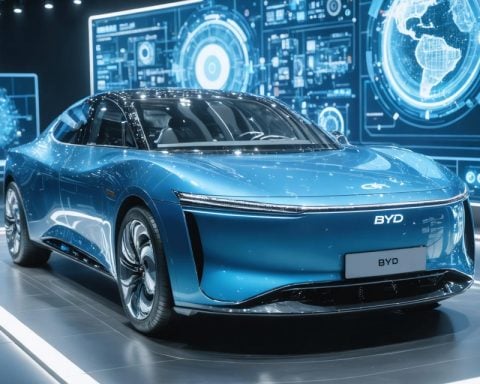The E-bike market is experiencing rapid growth worldwide, driven by increasing urbanization, environmental concerns, and the health benefits of cycling. According to a recent report, the market was valued at USD 59.42 billion in 2023 and is expected to reach nearly USD 134.69 billion by 2030, with a CAGR of 12.4% from 2024 to 2030.
One of the key factors driving the market is the shift towards sustainable transportation options. With stringent emission standards and the depletion of fossil fuels, governments and consumers are turning to electric-powered vehicles. E-bikes offer a clean and efficient mode of transportation, reducing carbon emissions and promoting healthier lifestyles.
Pedal-assisted electric bicycles, also known as Pedelecs, are dominating the market. These bikes combine pedal power with an electric motor, providing an extra boost for riders. With advancements in battery technology, e-bikes can now travel longer distances and reach higher speeds, making them a viable alternative to traditional bicycles and motorcycles.
China currently dominates the global market, accounting for 83% of e-bike sales. However, Europe, particularly Germany and the Netherlands, is experiencing significant growth. North America, despite higher average costs compared to China, is also witnessing an increase in demand for e-bikes.
In order to meet the growing demand, key players in the industry are constantly innovating and expanding their product portfolios. Companies like Yamaha, Giant Manufacturing, and Accell Group are introducing new electric bicycle models with advanced features and improved performance.
As the market continues to grow, it is important for regulators to establish consistent and supportive policies. Regional regulations, such as incentives for e-bike adoption and infrastructure development, play a crucial role in shaping the market dynamics.
In conclusion, the global e-bike market is experiencing significant growth due to factors such as urbanization, environmental concerns, and health benefits. With pedal-assisted electric bicycles leading the way, the market is expected to expand further in the coming years. Key players are investing in research and development to offer innovative and sustainable transportation solutions. As regulators implement supportive policies, the adoption of e-bikes is likely to increase, paving the way for a greener and healthier future.
The e-bike industry is part of the larger electric vehicle market, which includes electric cars, electric scooters, and electric motorcycles. According to a report by Grand View Research, the global electric vehicle market was valued at USD 162.34 billion in 2019 and is projected to reach USD 802.81 billion by 2027, growing at a CAGR of 22.6% from 2020 to 2027.
Within the e-bike market, there are several segments based on the type of e-bike. These include city/urban e-bikes, mountain e-bikes, trekking e-bikes, and cargo e-bikes. Each segment caters to different consumer needs and preferences, such as commuting, recreational riding, or carrying heavy loads.
Market forecasts indicate that the Asia-Pacific region is expected to dominate the e-bike market in terms of sales revenue. This is mainly due to the large population in countries like China and India, where e-bikes are popular modes of transportation. Europe is also expected to witness significant growth, driven by favorable government initiatives and increasing consumer awareness about the benefits of e-bikes.
However, there are several challenges and issues associated with the e-bike industry. One of the main concerns is the lack of standardized regulations and safety standards across different regions. This can lead to inconsistency in e-bike classifications, speed limits, and other regulations, making it difficult for manufacturers and consumers to navigate the market.
Another issue is the high initial cost of e-bikes compared to traditional bicycles. While the prices of e-bikes have been declining in recent years, they are still considered a premium product, which can limit their accessibility to a wider audience.
Infrastructure and charging capabilities also pose challenges to the widespread adoption of e-bikes. In order to support the growth of the e-bike market, governments and municipalities need to invest in infrastructure development, such as dedicated e-bike lanes and charging stations.
To stay competitive in the market, e-bike manufacturers are focusing on technological advancements and product innovations. This includes improvements in battery technology, motor efficiency, and connectivity features. For example, some e-bikes now come with integrated GPS systems, smartphone connectivity, and advanced sensors for enhanced safety and performance.
Overall, the e-bike market is expected to continue growing at a significant rate in the coming years, driven by factors such as urbanization, environmental concerns, and the desire for healthier and more sustainable transportation options. As governments and industry players address the challenges related to regulations and infrastructure, the market is likely to witness further expansion and innovation.
For more information on the global electric vehicle market, you can visit Grand View Research.
To stay up to date with the latest trends and news in the e-bike industry, you can visit E-Bike Tips.







